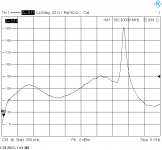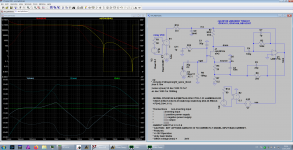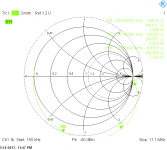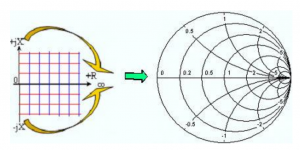Interesting part, indeed low noise, but otherwise, when it comes to the JFET figure of merit, it still lags behind the low noise AM amplifier parts available, among others, from Onsemi and Interfet. Here are some numbers:
Figure of merit(FM)=gm@Vgs=0V/(2*PI*Ciss@Vgs=0V) [MHz]
Some numbers:
Toshiba 2SK170 FM=112MHz
Toshiba 2SK209 FM= 184MHz
TI JFE150 FM=361MHz
Interfet IF3601 FM=398MHz (overestimated, Ciss is not spec'd at Vgs=0V)
Sanyo/Onsemi 2SK3557 FM=558MHz
NXP BF862 FM=765MHz
Sanyo/Onsemi 2SK932 FM=796MHz
The 2SK3557 (a Sanyo legacy, the silicon behind many current Onsemi JFETs, including duals, cascoded, etc...) is still in production at Onsemi, and is clearly among the best, others are already in the Dodo bird land.
Some may ask why is this figure of merit important? For once, I would not use a low figure of merit jfet in the input stage for a condenser microphone (or any other application with a very high source impedance, like an electrometer). For low-ish source impedance (like a MM cartridge) the figure of merit is not that important, the low noise is at premium.
Figure of merit(FM)=gm@Vgs=0V/(2*PI*Ciss@Vgs=0V) [MHz]
Some numbers:
Toshiba 2SK170 FM=112MHz
Toshiba 2SK209 FM= 184MHz
TI JFE150 FM=361MHz
Interfet IF3601 FM=398MHz (overestimated, Ciss is not spec'd at Vgs=0V)
Sanyo/Onsemi 2SK3557 FM=558MHz
NXP BF862 FM=765MHz
Sanyo/Onsemi 2SK932 FM=796MHz
The 2SK3557 (a Sanyo legacy, the silicon behind many current Onsemi JFETs, including duals, cascoded, etc...) is still in production at Onsemi, and is clearly among the best, others are already in the Dodo bird land.
Some may ask why is this figure of merit important? For once, I would not use a low figure of merit jfet in the input stage for a condenser microphone (or any other application with a very high source impedance, like an electrometer). For low-ish source impedance (like a MM cartridge) the figure of merit is not that important, the low noise is at premium.
Last edited:
> For low-ish source impedance (like a MM cartridge) the figure of merit is not that important, the low noise is at premium.
Isn't that the case for most signal source in audio (Zout << 1k) ?
More often than not, we need to add a high-value (up to 1k) gate stopper to prevent oscillations.
That is more so with those JFETs (2SK3557, 2SK2394, BF862) designed for tuner / RF applications.
Patrick
Isn't that the case for most signal source in audio (Zout << 1k) ?
More often than not, we need to add a high-value (up to 1k) gate stopper to prevent oscillations.
That is more so with those JFETs (2SK3557, 2SK2394, BF862) designed for tuner / RF applications.
Patrick
Not often I don't have a clue of what you are talking about and Google hasn't got any translation either.
Yeah. You kinda have to go through North American immersion to get that one. 🙂
A wedgie is when you grab the elastic band on someone's underpants from behind and pull up. Bullies do this in grade school.
Tom
Totally agree that if you have high source impedance, this isn't the JFET for you. Remember that this is the FIRST low-noise JFET from TI, not the last. We had to start somewhere and we decided to start with a product we had a customer screaming for. But I am definitely in favor of us releasing more products in this space to accommodate a broader range of applications.
Isn't that the case for most signal source in audio (Zout << 1k) ?
Last time I've checked, condenser microphones are audio devices. Probably not very common in the DIY audio community, though. I would also not use low FM JFETs for a ceramic cartridge (yes, they are still praised in some audiophile circles).
More often than not, we need to add a high-value (up to 1k) gate stopper to prevent oscillations.
No you don't. A ferrite bead (zero noise, since it is not dissipative) on the gate will do, even for a massive paralleled JFETs setup. I've paralleled 64 BF862 in this way, a few years ago, and got under 180pV/rtHz input referred noise (phot of the setup and the measurements are buried somewhere on this forum).
Last edited:
Condenser microphone is ONE of many audio signal sources.
I chose the word "most" carefully.
I am stupid. I do not understand ferrite beads.
So I don't use them.
But that is just me.
Cheers,
Patrick
I chose the word "most" carefully.
I am stupid. I do not understand ferrite beads.
So I don't use them.
But that is just me.
Cheers,
Patrick
Condenser microphone is ONE of many audio signal sources.
I chose the word "most" carefully.
Sorry, you missed a plural and that confused the sense of your statement.
I do not understand ferrite beads.
So I don't use them.
But that is just me.
Perhaps it's time to give them a shot; they need some TLC to avoid a resonance with Ciss and hence possible expose an input impedance with a negative real part to the outside world (read: instability), but nothing that cannot be fixed by adjusting the ferrite beads values and the Id. The larger the Id, the larger the stability risk, as expected, but then the Id latitude is pretty large, since the noise goes up/down only with the 0.25 power of Id.
The DIP-ADAPTER-EVM board is a useful adapter to put the SC70 package in a standard 8 pin socket. This board is usually referenced in the Design & developement section of TI parts supplied in this package, but it is not listed on the JFE150 product page.
Good point, we can definitely get the dip adapter EVM linked to the product page. We usually do that for op amps and instrumentation amplifiers, but no problem doing it for this device as well.
No you don't. A ferrite bead (zero noise, since it is not dissipative) on the gate will do, even for a massive paralleled JFETs setup. I've paralleled 64 BF862 in this way, a few years ago, and got under 180pV/rtHz input referred noise (phot of the setup and the measurements are buried somewhere on this forum).
That it has no dissipation at DC where Z==0 does not mean it has no dissipation on frequencies where it has Z==1K, mostly real.
Unfortunately for beads, the nominal impedance is measured at 100 MHz. But you may need it at 100 KHz, where it is MUCH MUCH smaller.
This here is a 10 Ohm Murata bead which I measured when I needed to calm down an Infineon BFP640 BJT, where it does a wonderful job at a few GHz.
At the nominal 100 MHz it features Z==13 Ohms, as would be expected from the data sheet. At 100 KHz, the impedance is zero. In the plot, even the 100 MHz are very close to the left. Higher Z beads are similar in proportion, I can measure some if there is interest.
But at f==0, the result is the same.
In this circuit, you would need a few 100 Ohms at 200 KHz to stabilize it, a thing that ferrite beads cannot deliver. And if it would look like few hundred Ohms at this frequency,
it would also create thermal noise like a few 100 Ohms. You cannot fool thermodynamics.
The circuit example is from an text book whose authors I regard highly.
Gerhard
Attachments
Last edited:
And the neg real part is a reality, as you can see in this measurement of an IF3602 adventure of mine:
Sorry for light green on white, the green on black of the VNA screen looks better.
At the 3 marker frequencies, the s parameters are decoded to Ohms and pF in series.
This architecture with the feedback into the source is often seen, but a bad idea.
It works with an ideal VCVS, but not with a real live opamp.
Sorry for light green on white, the green on black of the VNA screen looks better.
At the 3 marker frequencies, the s parameters are decoded to Ohms and pF in series.
This architecture with the feedback into the source is often seen, but a bad idea.
It works with an ideal VCVS, but not with a real live opamp.
Attachments
Last edited:
About the upcoming dual version: Any hope for some degree of compatibility with existing offerings from competitors (as in same package with similar pinout)?
There are thousands of ferrite core inductors, from 0402 to 1206 size, with a value of ~1uH, a DC resistance in the milliohm range, and frequencies from 100KHz to many MHz. Use one of your choice.
I think we found the codename for the next JFET we develop.
I love this. 😀
I was interested in this thread already, but now I can’t wait for more developments. Thanks for throwing the diy crowd a bone!
I haven't tried it yet, but I plan looking at some "dirty" powdered iron inductors to help tame some lateral mosfets. The plan would be to use a few turns on a small powdered iron toroid. I specifically had the T20-26 from Micrometals in mind. Powdered iron is quite lossy at high frequencies, so this might be a go. An even grubbier mix like Micrometals type 40 might work even better.
Micrometals powdered iron are the same like Amidon red and yellow.
They feature a quite good Q in the region to 10 MHz.
They feature a quite good Q in the region to 10 MHz.
About the upcoming dual version: Any hope for some degree of compatibility with existing offerings from competitors (as in same package with similar pinout)?
Yes, as well as a small-package option. We will be sure to let you know when this goes live.
Regards,
Mike
- Home
- Vendor's Bazaar
- Ultra Low Noise JFETs from Texas Instruments



